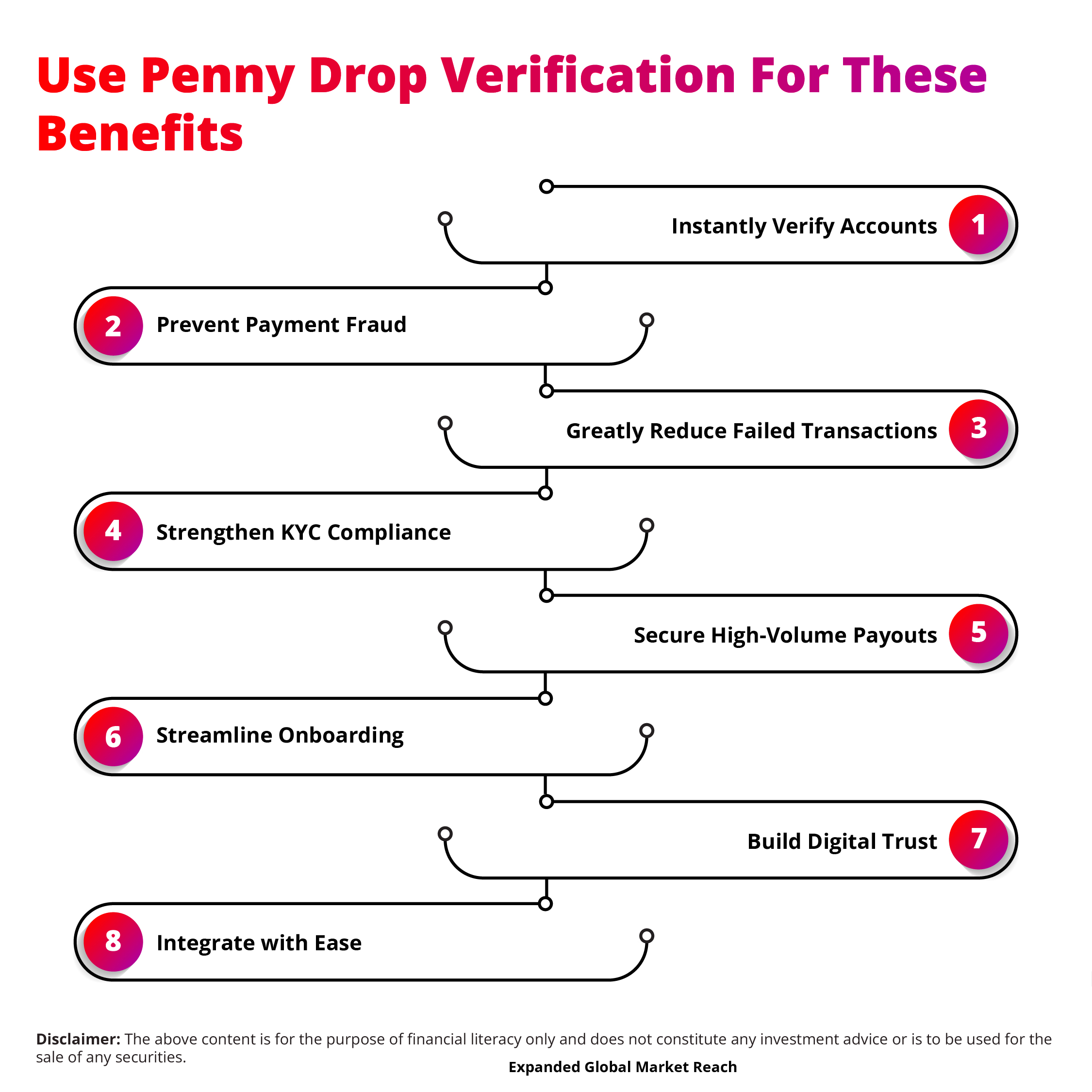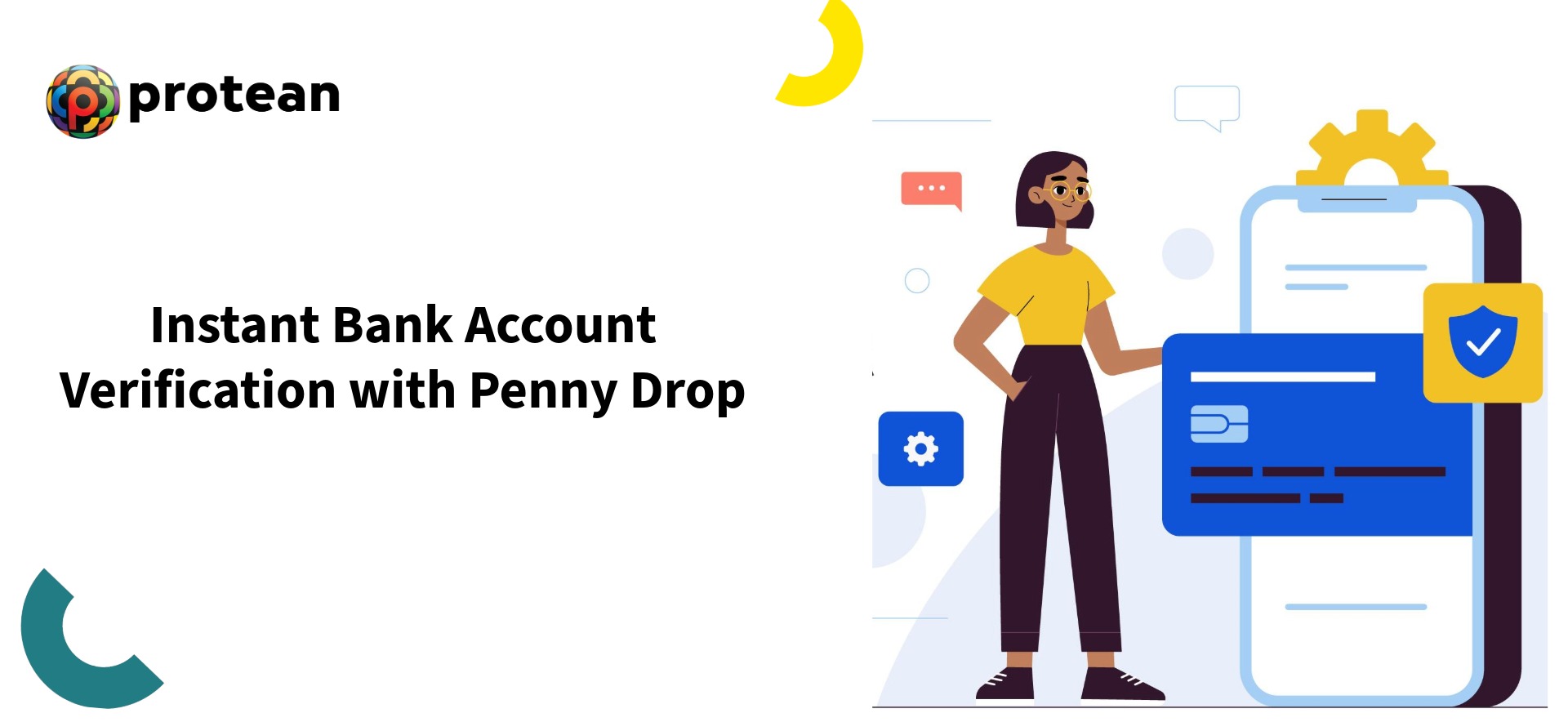How can businesses benefit from penny drop verification? Penny drop verification technology is embedded with several major business benefits.
In a digital economy, for transactions, the speed of money movement is important. However, this speed need not come at the cost of security. Modern businesses can face constant risks related to fraud and simple human error in financial data entry.
A single mistyped account number can lead to failed payrolls, lost vendor payments, and much operational chaos. Penny drop verification can efficiently solve this problem. Penny drop verification is a simple and automated test. It can provide a powerful first line of defense to help ensure that your business's funds land in the correct bank account, reducing errors and fraud.
Penny Drop Strategic Advantages: Security, Speed, and Compliance
The core value of penny drop verification is in its ability to confirm multiple facts at once. When a business initiates a penny drop, it sends a nominal amount, like one rupee, to a beneficiary's bank account. A successful deposit can instantly confirm three important aspects.
- The validity of the account number
- The correctness of IFSC code
- The active status of the account, confirming it can receive transactions
However, the most important piece of data returned is whether the beneficiary's name is registered with the bank. Your business can then programmatically match this name against the name in your records.

This simple act of matching can provide your business with a much needed security boost. It can prevent payments to fraudulent or incorrect accounts and safeguard your company from financial loss. This preemptive check can greatly reduce failed transactions and associated reversal fees. Thus your payment processes are streamlined.
Furthermore, this verification method is a main component of regulatory compliance. It can help businesses fulfill their Know Your Customer (KYC) obligations by validating a beneficiary's identity. This process is essential for financial institutions, insurance companies, and any business that handles large-scale payouts. A robust penny drop system forms a foundational pillar of a secure and compliant financial operation.
Where Penny Drop Can Make the Biggest Difference
The applications for penny drop verification can span across any industry that relies on bank transfers.
- For HR and finance departments, it is an important tool for employee and vendor onboarding. Verifying an account before the first salary or invoice payment can help in a smooth process and avoids the administrative nightmare of failed disbursements.
- In the financial services and insurance sectors, this method is of even greater importance. Lenders can use penny drop verification to validate a borrower's bank account before disbursing a loan. Insurance companies can use it to confirm a policyholder's details before paying out a claim.
- E-commerce marketplaces and gig economy platforms also rely heavily on the penny drop method. They use it to securely onboard new sellers and freelancers, guaranteeing that their earnings are transferred to the correct, verified owner of the account.
Penny drop verification is a simple yet effective mechanism that builds trust by ensuring accurate account validation in high-volume digital ecosystems.
With modern API technology, implementing this solution does not require building a complex system from scratch. Modern digital ecosystems, such as RISE with Protean, can offer robust, API-based solutions for bank account verification. Businesses can integrate a penny drop verification API directly into their existing onboarding or payment workflows. Thus, instant and automated verification can be implemented without disrupting the user experience. A platform like RISE with Protean centralises this capability alongside other identity verification tools, providing a single, reliable source for building secure and efficient digital journeys.
Conclusion: The Foundation of Modern Growth
To conclude, penny drop verification is more than just a simple check. Instead, it is a fundamental component of digital trust. It can protect your business from financial loss, ensure your operations run smoothly, and demonstrate a commitment to security and compliance.
In a competitive landscape, the efficiency and security gained from automated verification are not just an advantage, but are a necessity. Therefore, adopting a reliable penny drop solution is a critical step in building a resilient and scalable business ready for the digital-first economy.
Frequently Asked Questions (FAQs)
1. How does penny drop verification work?
A business uses a penny drop API to send a very small amount (e.g., ₹1) to the recipient's bank account. If the transaction succeeds, the bank confirms the account is valid and returns the account holder's registered name, which the business can then match against its records.
2. Is penny drop verification secure?
Yes, it is a highly secure method. The transaction amount is negligible, and the process is automated. Its entire purpose is to prevent fraud by confirming account ownership before any significant funds are ever transferred, protecting both the business and the beneficiary.
3. What is the main benefit of penny drop verification over just checking the account number format?
While some checks can validate an account number's format, penny drop verification confirms the account is actually active, exists at that bank, and, most importantly, provides the name of the account holder. This name-matching step is what prevents payments to a valid account that belongs to the wrong person.

